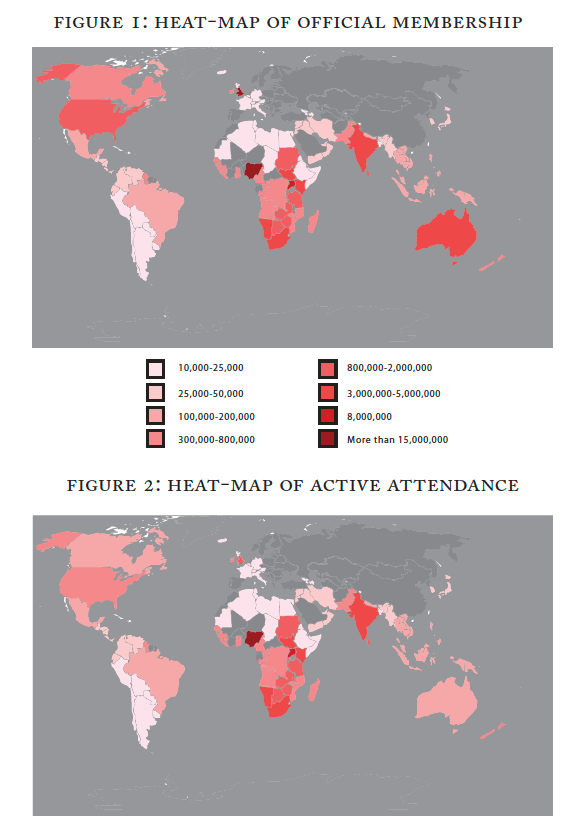We commend with gratitude the following analysis put together by the Rev. Ben Jeffries for us on the state of the Anglican Communion. It can also be found on our website here. We wanted to add a note that here we are only citing provinces that are on the existing “ACC Schedule C” list of Anglican churches, so we are not counting either ACNA (with an ASA of about 120k) or the Anglican Church of Brazil. In addition, since Australia includes Sydney (about 50k members), we must subtract that from the total Canterbury-led Communion and shift those numbers over to the GAFCON/GSFA group. This would increase the number of conservative churches and the figures cited for them in this analysis.
The Kigali Commitment (2023) asserts that the primates who align with the statement “represent the overwhelming majorty (estimated at 85%) of Anglicans worldwide.” The accuracy of this number has been publically challenged, and so an explanation is in order.
The “85%” number is based on estimates of Average Sunday Attendance (ASA) across the Anglican Communion. That is, if you were to tabulate all the Anglicans worshiping in Anglican Churches on any given Sunday, roughly 85% of them would be under Bishops whose primate is a part of either GSFA or GAFCON.
If we conceive of two different “Communions”—one aligned with the Archbishop of Canterbury, the other aligned with the Kigali Commitment, it is true that, at the level of official membership, these each represent about 50% of the Anglican Communion. (The Wikipedia page ‘Anglican Communion’ has a robust compilation of well-documented official membership data.)

However this figure conceals more than it reveals, specifically regarding the Canterbury-aligned portion of the Communion. For instance, (and all numbers here are pre-pandemic, for the sake of argument) whereas the Church of England reports 26 million Anglicans among its membership, the reality is that less than 900,000 are in Church on any given Sunday. There is an analagous disparity throughout the Western nations. The Episcopal Church reports 1.6 million members, but has an ASA of around 500,000.
By contrast, the Anglican churches in Nigeria and Uganda (the two largest Anglican churches on the African continent) have ASA numbers that are nearly identical with their official membership numbers. This cannot be confirmed with hard data, because these churches do not record ASA as a reported metric (indeed, the churches there are often so full, it would be difficult to record!), but it is confirmed anecdotally by many Bishops of these provinces.
Subsequently, if we remove from the equation nominal Anglicans who never go to Church, the Anglican Communion consists of about 50 million active Christians. GAFCON’s contention is that 85% of these are aligned with the GAFCON movement.
We can partially verify this by running the numbers the other way: If we add up the (pre-COVID) ASA of the Church of England (854,000), The Episcopal Church USA (547,000), the Anglican Church of Canada (97,000), the Scottish Episcopal Church (12,000), the Church in Wales (33,000) and the Anglican Church of Australia (220,000) we get a total of 1.76 million active Anglicans in provinces clearly aligned with Canterbury. This amount to roughly 4% of the active Anglican Communion.
By contrast 35 million Anglicans (70%) are under primates already clearly aligned with GAFCON and the Kigali Commitment, and many more connected to the GSFA appear to be sympathetic (as evidenced by the letter from the GSFA following the Church of England’s decision to bless gay marriages). Therefore, the 85% seems to be a fair and probable estimate of the real lay of the land within Global Anglicanism.

